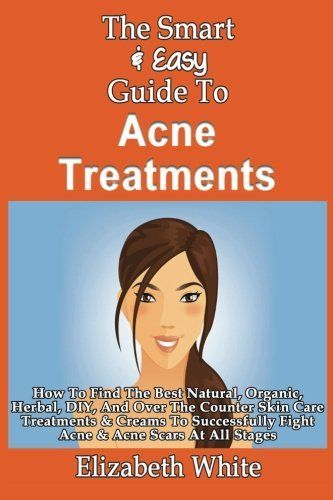
The Smart & Easy Guide to Acne Treatments How to Find the Best Natural, Organic, Herbal, DIY, and Over the Counter Skin Care Treatments & Creams to Successfully Fight Acne & Acne Scars at All Stages
Pimples are a common part of everyday life for teenagers and adults, men and women, alike. However, while for many, the occasional pimple is just a small irritation, for some, acne is a real problem. Acne refers to excessive pimples. Though it is often seen as a problem most associated with teenagers, acne effects a variety of different populations for different reasons. Acne can be unsightly and even painful, and a whole host of myths surround this common, but troublesome skin issue. The Smart & Easy Guide to Acne Treatments provides a well rounded explanation of what acne is and what causes it. The guide also seeks to dispel many of the common myths surrounding this common skin condition. Finally, it provides a brief overview on the different types of treatment options available to those who suffer from acne. Acne is a skin condition that involves the blocking of pores which leads to the proliferation of bacteria within the pore. It is at this point that the skin begins to swell and a pimple forms. Due to many of the physical and biological changes associated with puberty, acne is most commonly seen in teenagers, but can effect adults and even young children and babies. While not all the causes of acne are completely understood, the guide notes the following as the most common causes of acne: Excessive amounts of sebum Changes in testosterone levels Poor diet and health The use of certain medications Hormonal fluctuations due to menstrual cycles and pregnancy Hereditary factors The guide also notes that there are many myths that surround acne. The following are commonly believed causes of acne, that are, in fact, actually myths and completely untrue. Chocolate causes acne Sex causes acne Acne is unavoidable Poor personal hygiene completely explains acne Popping pimples is a good thing Acne only effects teens Most people think that a pimple is a pimple, but in fact, there are actually a number of different kinds of acne. The Smart & Easy Guide to Acne Treatments briefly details the differences between types of acne, how the acne presents itself and what areas of the body are most often effected by the different forms of acne. There are a huge number of different treatment options for those who suffer from acne. The guide briefly discusses the most common home remedies, natural remedies, over-the-counter topical remedies, as well as prescription-only remedies that are often used to treat acne. For those with mild acne, many over-the-counter topical treatments work just fine. As these contain active ingredients that may dry the skin out, it is recommended to try a few different brands to determine what works best for a specific skin condition. Prescription treatments for acne are generally only for those who suffer from severe acne and often include antibiotic or oral steroid treatment. The guide also goes over some of the basic options for those who suffer from scarring from earlier acne problems. There are a variety of creams, as well as things like laser treatment that have proven effective in reducing or eliminating the appearance of scarring caused by acne. Acne can also be an issue for babies and children and, as the guide notes, this must be treated in a different manner than acne in adults. The guide provides a brief overview of acne in babies and children, as well as how to safely and effectively treat it. Acne may be a common skin condition, but that does not make it any less troublesome. It is unsightly and can be detrimental to self esteem and without treatment, it can cause permanent damage and scarring to the skin. The Smart & Easy Guide to Acne Treatments, provides simple explanations about acne, its causes and how to effectively treat it with one of the many treatment options. The guide also helps to shed light on the myths that abound about acne.